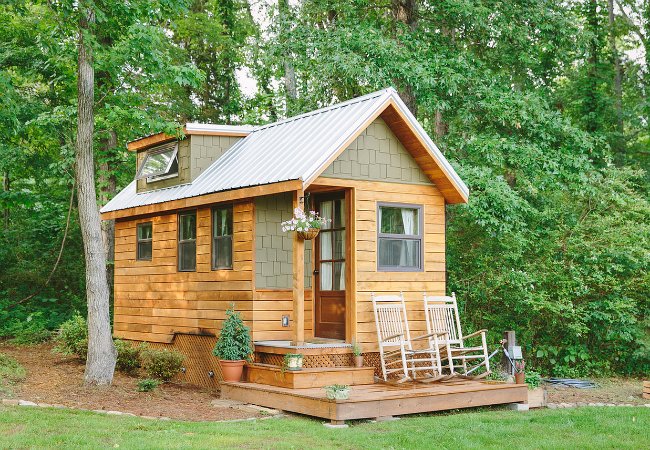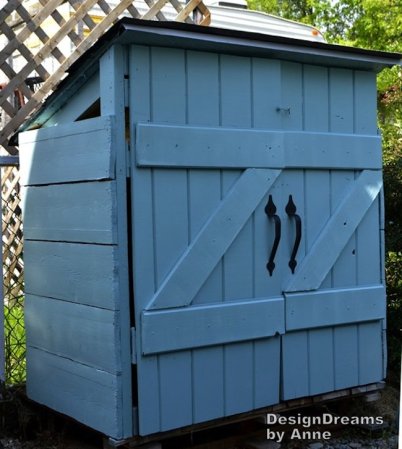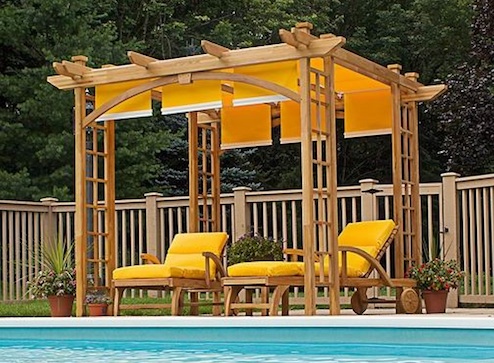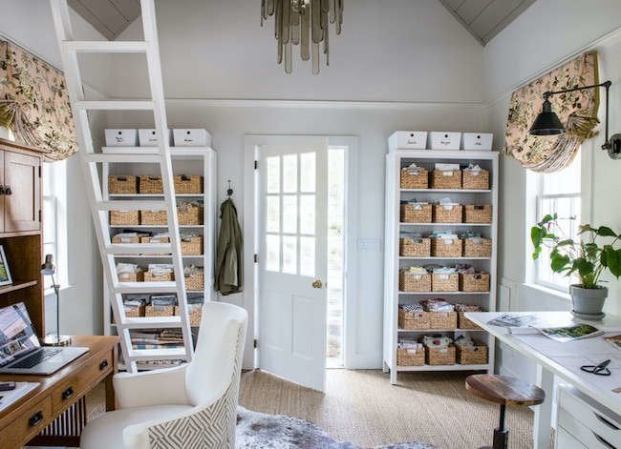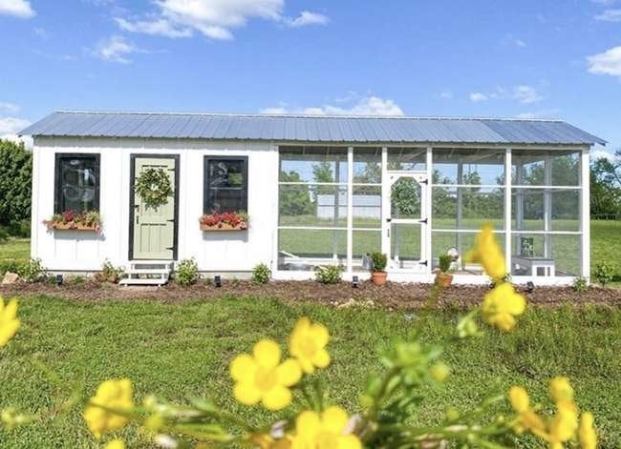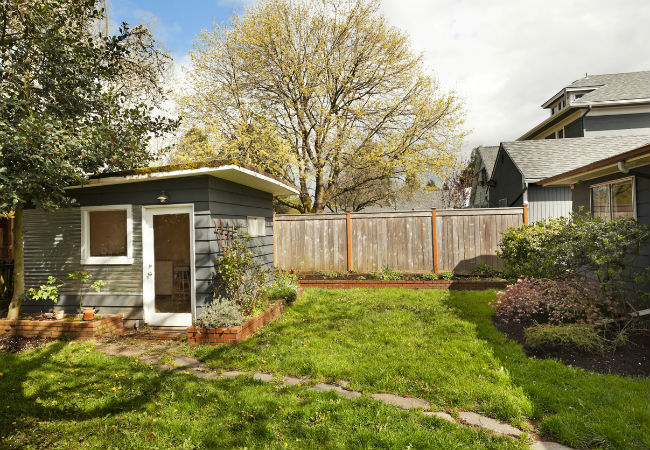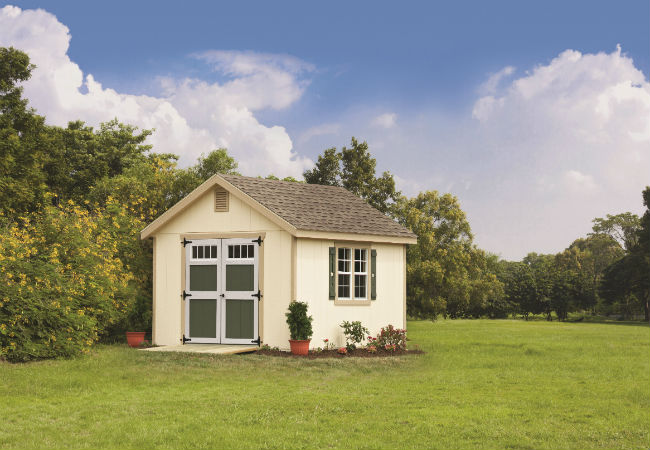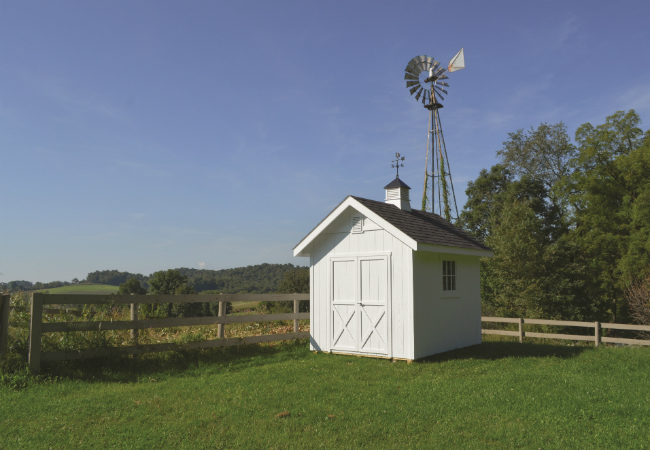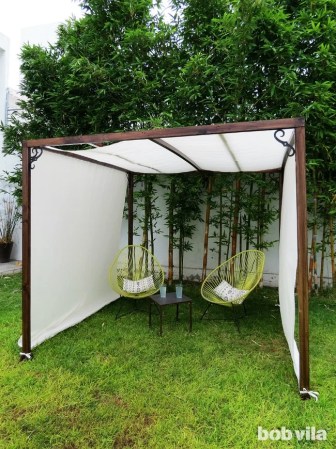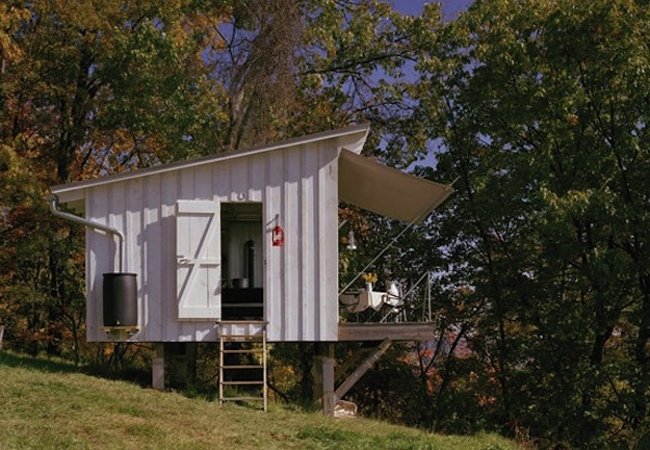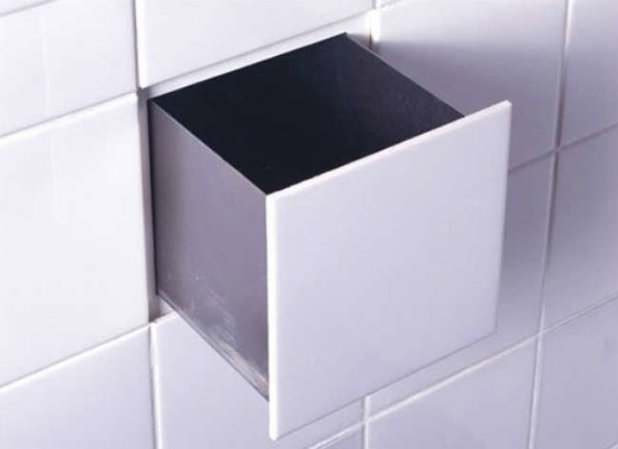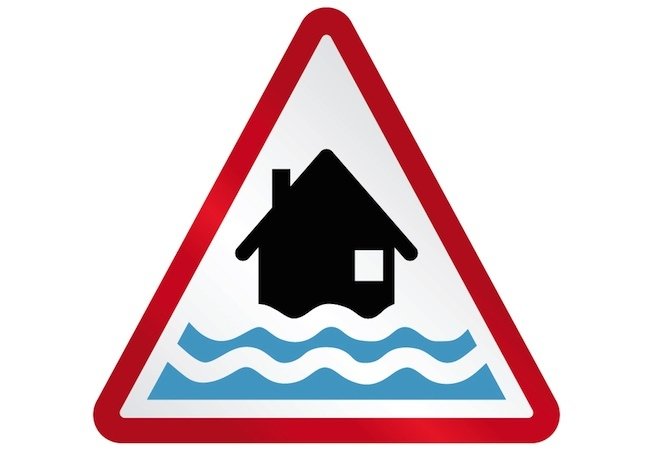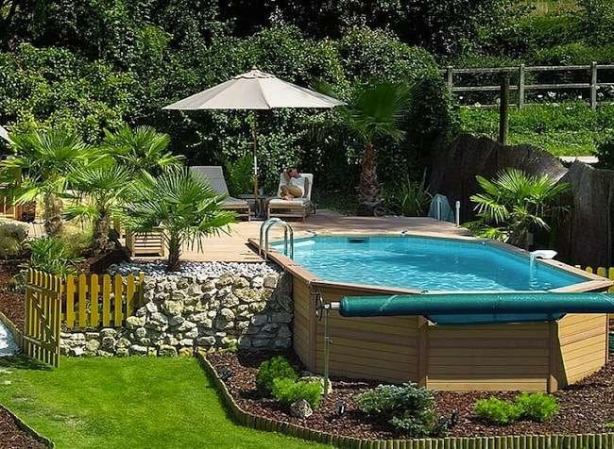We may earn revenue from the products available on this page and participate in affiliate programs. Learn More ›
The average American spends a third to half of his or her income just putting a roof overhead, so it’s no surprise that the tiny house movement has caught on in a big way. It sure did with Travis and Brittany Pyke of Chattanooga, Tennessee. Opposed to pouring thousands down the drain in rent, Travis—a carpenter and construction worker—built the couple a pint-size bungalow in 2013. “What other young newlyweds can own their own home without a mortgage?” wife Brittany enthuses. About a year later, Travis and two friends partnered up to launch Wind River Tiny Homes, creating downsized dwellings for others for prices starting at $40K. So exactly how tiny is tiny? Between 100 and 300 square feet for a trailer-ready home and 500 to 600 square feet for one with a permanent foundation. Because living large in a little space does require adjustment, we asked the Pykes to share their strategies for happily ever after in an itty-bitty abode.
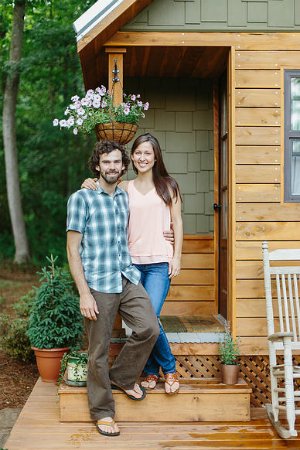
Have Your Reasons
Tiny home living obviously demands dependence on a lot less stuff, but don’t think of it as giving things up. “Write a list of your life goals,” says Brittany. “Mine included being debt free by age 30 and having the freedom to travel. Knowing what your ‘big picture’ dreams are can help in the process of downsizing.”
Cut Back in Categories
You know you need to live with less, but where do you even begin? “Downsize in stages to prepare for a move into a tiny house,” says Travis, advising that you learn to live with less by cutting back on one type of item at a time. “For me, it was easiest to start with clothes; for you it may be kitchenware or office supplies,” he says. Starting with the easiest category will get you in a positive mindset when you succeed. “Take stock of each item, considering how important it truly is. If you haven’t used it in the past month, you don’t need it,” Travis says. “You will find living with less actually feels like more because you’ll actually use and love every item you own. No more junk. No more clutter.”
Tailor Your Home to Your Life
As with building any house—but particularly when you design a tiny home—every nook and corner, material, and design needs to work for you. The two most crucial considerations: lifestyle and location. “Where do you spend most of your time?” Travis asks. “Do you cook and entertain a lot? Do you want storage for a certain hobby or collection?” Knowing your needs and desires will let you allot appropriate space in your home. Location then dictates things like insulation, windows, utilities, and overall materials used. “For example, a tiny home in Vermont could have closed-cell spray foam insulation, strategically placed windows that allow heat from the sun to come in, durable siding, and fixtures like a wood stove,” Travis says. “A tiny home in Florida could have lighter-toned siding to reduce heat, solar panel installment, and more outdoor living space.”
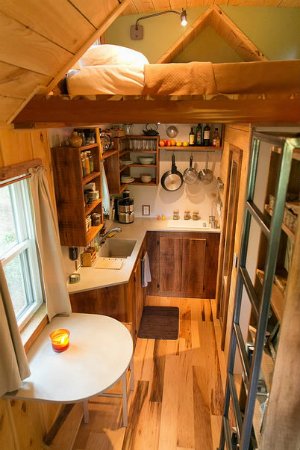
Stay Space-Smart
The key to designing a tiny house is to eliminate dead space. Almost every nook and cranny can squeeze in some sort of cubby storage or a shelf. “You can also get creative with functional shelving, such as a bookcase that also doubles as a ladder to the loft,” Travis explains, “or a shelf-table that hinges down against the wall to provide space for entertaining. And as long as you don’t compromise your insulation, you can even build things like a spice cabinet or a drop-down ironing board between wall studs.”
Understand Your Utilities
Most tiny house plumbing operates just like that of a typical home, minus how the water hooks up and goes out. “The hookup can be as simple as attaching an RV hose to an external spigot and screwing it into your tiny house,” Travis says. “A composting toilet eliminates ‘black water’ or, if your zoning allows, you could make your own gray and black water leach field.”
HVAC options vary and tend to depend on climate. “Propane and gas heaters are very efficient, and you can find aesthetically pleasing units, such as those made for sailboat cabins,” says Travis. “For cooling, you could have a typical window air conditioner, a mini-split system, or simply strategically placed screens and fans to keep a nice airflow going.”
And speaking of small stuff, the average utility bill for a tiny home ranges from $30 to $50—electric, water, sewage, just about everything but your cable and Internet. “I wouldn’t have been able to start this company from its bootstraps if I didn’t have minimal financial obligation each month,” Travis says.
Find a Place to Call Home
One of the big hurdles in the tiny house movement is—literally—where to live. “Zoning in some places is completely against it, yet in some cities there are ways around the zoning to make it legal,” Travis says. “What’s exciting is that smaller towns and cities—including Spur, Texas, and Walsenburg, Colorado—are restructuring zoning codes and labeling themselves tiny-house friendly.” Wind River Tiny Homes is also working to establish tiny home communities in both urban settings and rural settings. “We are passionate about creating legal spaces where ‘tiny housers’ can park their dream homes and live in a like-minded community,” Travis says.
Enjoy the Closeness
Tiny home enthusiasts find privacy overrated: “I believe our marriage is richer because we can’t hide in another area or floor of our home,” Brittany says. “We face small disagreements as they come, and our communication is enhanced. And although we both value ‘me space,’ mine is simply a chair in a corner of our tiny home, where I can curl up under my favorite blanket with a good book.”
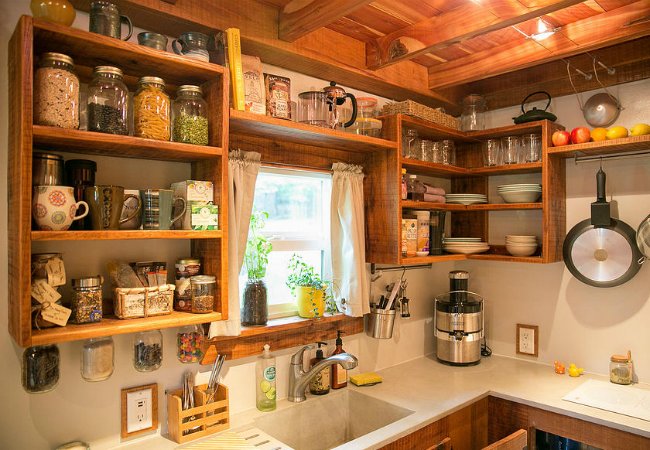
The key to living comfortably in a tiny house is keeping the space organized and tidy. If your own home could use some decluttering, check out our video below on 14 household items to trash without thinking.

